Wildromantisches Tiroler Tal nach einem schweren Winter
Musau, Österreich, 19. Mai 2019
Im April 2019 mehrten sich in Europa Befürchtungen, dass sich 2019 das extreme Wetter mit einer Hitzewelle in vielen Regionen wiederholen könnte. Zum Glück kehrte das Wettergeschehen im Mai 2019 zur Normalität mit Regen und kühleren Temperaturen zurück. Anders als in anderen Ländern gab es in den Alpen im Winter 2018/19 jede Menge Niederschlag. In manchen Ecken sogar Unmengen an Schnee. Zerstörerische Lawinen bedrohten Täler, zum Beispiel in Balderschwang. Starke Stürme richteten zudem schwere Schäden in den Bergwäldern an.
Ein Trip in die Alpen im Mai ist immer faszinierend. Besonders nach einer Periode mit den oben genannten Wetterextremen. In den höheren Regionen kann eine Wanderung im Sommer mit grünen Wiesen und warmen Temperaturen beginnen, aber der Winter ist nicht weit. Es ist auch eine Chance die enormen Kräfte in der Natur zu sehen. Es ist die Zeit gewaltiger Schmelzwasser, wenn große Schneemengen rasch abschmelzen. Und der letzte Winter hat viele Spuren hinterlassen: Die Natur beginnt sich gerade von den Lawinen zu erholen, und im Wald sieht man das zerstörerische Werk der Winterstürme.
Der Frühling kommt spät in den Bergen. Es ist eine kurze Zeit, in der das Leben in die gefrorene Welt zurückkehrt. Es ist eine Zeit, in der man sowohl unglaubliche Schönheit wie auch die zerstörerische Kraft der Elemente sehen kann.
Das Reintal bei Musau in Tirol bietet alles. Es ist perfekt für einen Ausflug und gut erreichbar. In den nördlichen Alpen ist es eines der beeindruckendsten Täler. Steile Felswände, ein wilder Bergbach, ein naturbelassener Wald und die hohen Gipfel der Allgäuer Alpen machen es zu einer unvergleichlichen Erfahrung.
In Musau gibt es sowohl eine Bahnstation wie auch einen Parkplatz, die “Bärenfalle” am Beginn des Wanderwegs. Die erste halbe Stunde des Weges führt durch den Wald und ist ein strammer Anstieg. Nach einer Weile erreicht der Weg die ersten Aussichtspunkte und die Berggipfel werden sichtbar.
Der 19. Mai, ein Sonntag, begann als sonniger und leichtbewölkter Tag. Jedoch gab es eine Unwetterwarnung. Es sollte sogar schon am Vormittag Gewitter geben. Doch das gute Wetter hielt länger als erwartet.
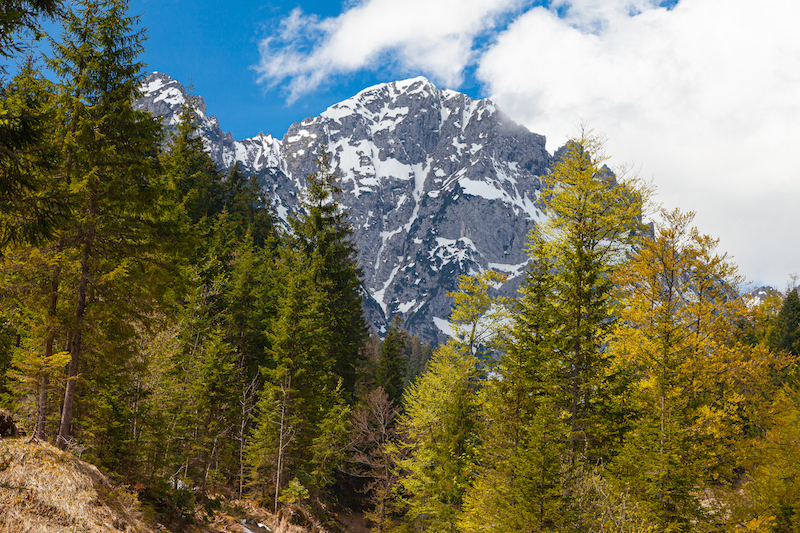
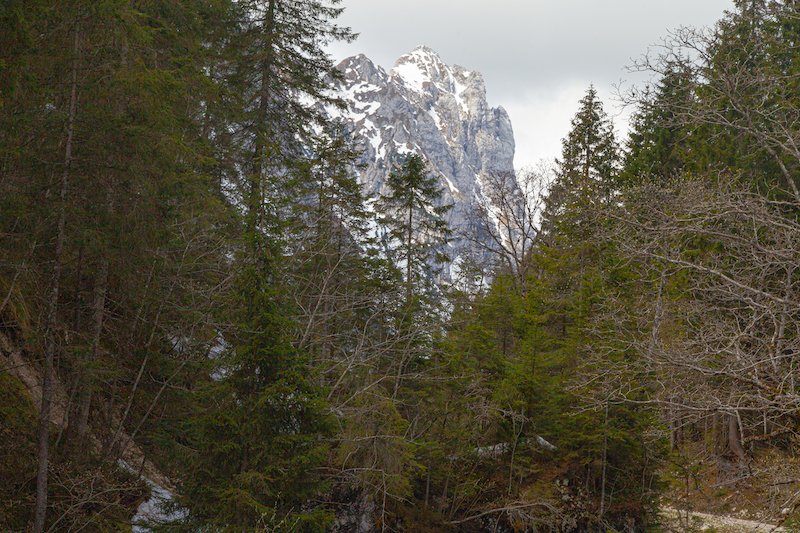
Der Wanderweg ist auch eine Forststraße, die das Dorf mit der Musauer Alm, der Otto Mayr Hütte und der Füssener Hütte verbindet.
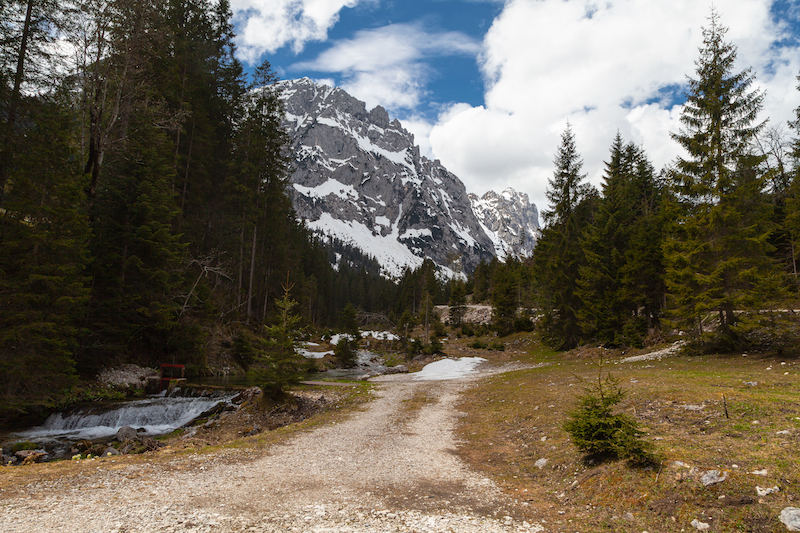
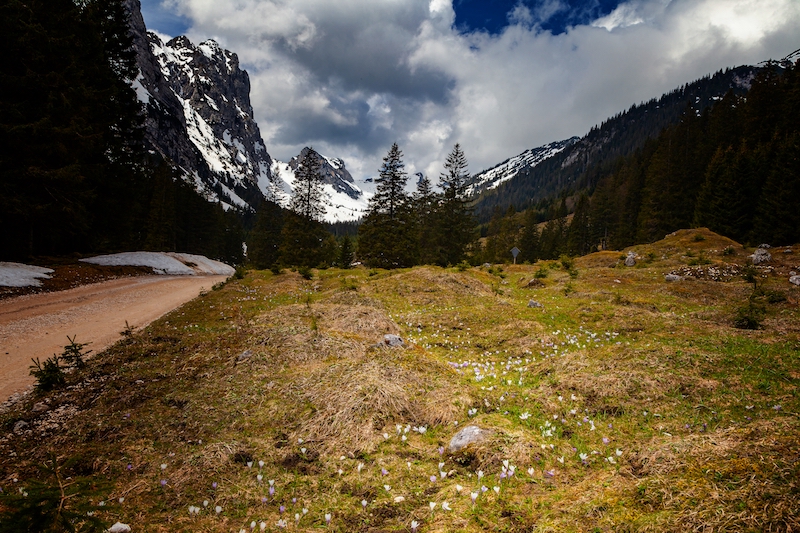
Nach einer circa eineinhalbstündigen Wanderung kommt die Musauer Alm in den Blick. Es ist eine perfekte Gelegenheit für eine Pause mit gutem Essen in einer sehr freundlichen Atmosphäre. Nach dieser Pause zur Mittagszeit sah das Wetter zunächst immer noch gut aus. Aber in den Bergen muss man immer wachsam sein. Die Verhältnisse können sich blitzschnell ändern.
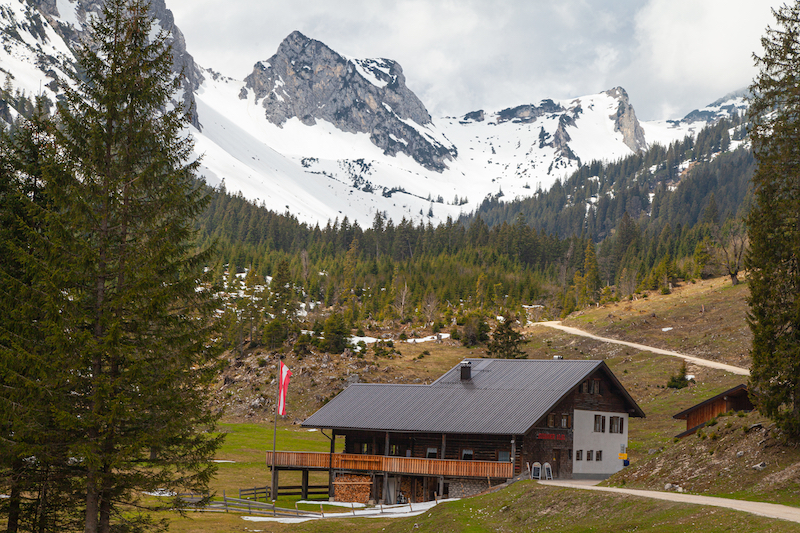
Hinter der Musauer Alm führt der Weg höher in das Tal hinauf. Hier ändert sich die Szenerie komplett. Statt des romantischen, grünen Tals sah es dort aus wie auf einem Schlachtfeld der Naturkräfte aus. Umgestürzte Bäume, die Reste einer Lawine und immer noch große Schneefelder hinterließen einen tiefen Eindruck. Man kann sehen, wie ein schwerer Winter in den Alpen das Gesicht der Landschaft verändert.
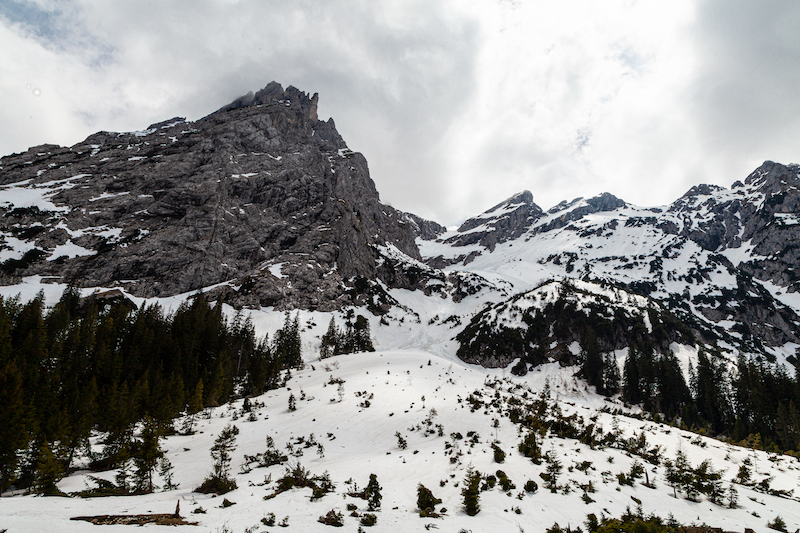
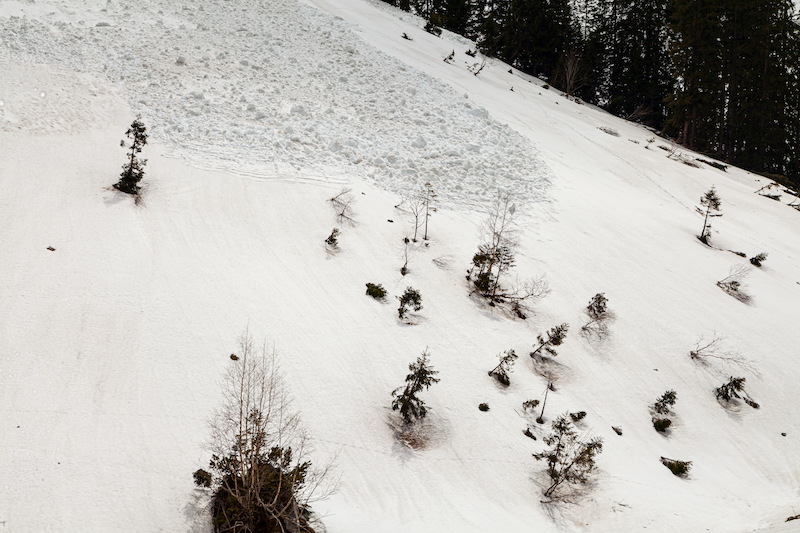
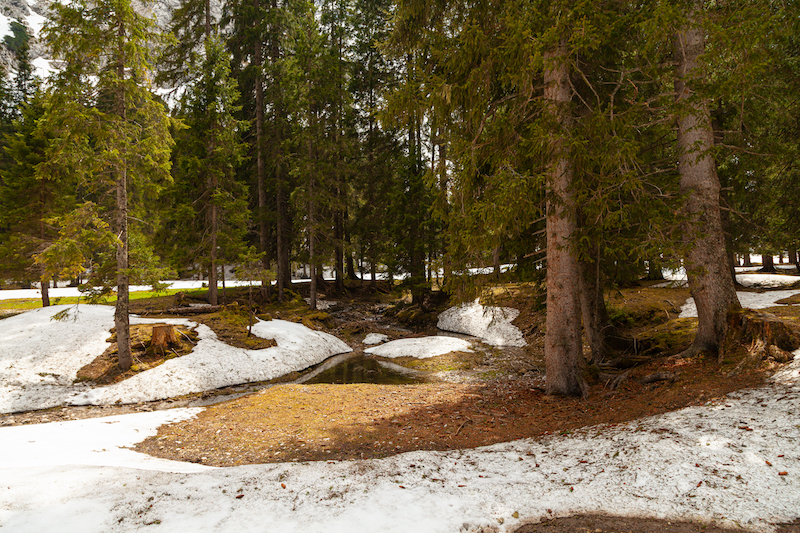
Am Nachmittag wurde es auf einmal von Osten her dunkel. Eine Regenfront mit einem Gewitter näherte sich. Zeit rasch umzukehren.
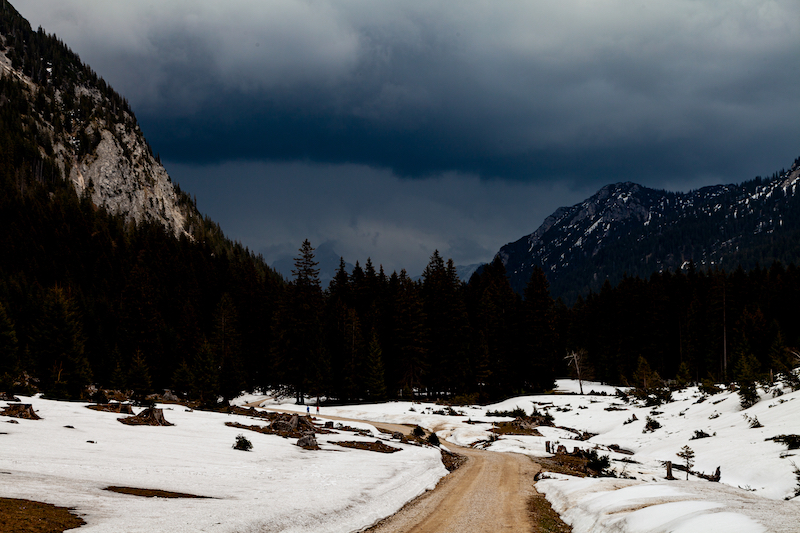
Schneller als erwartet, erschien nach dem starken Regenschauer die Sonne wieder. Jetzt zeigte sich die Landschaft in besonders magischer Weise.
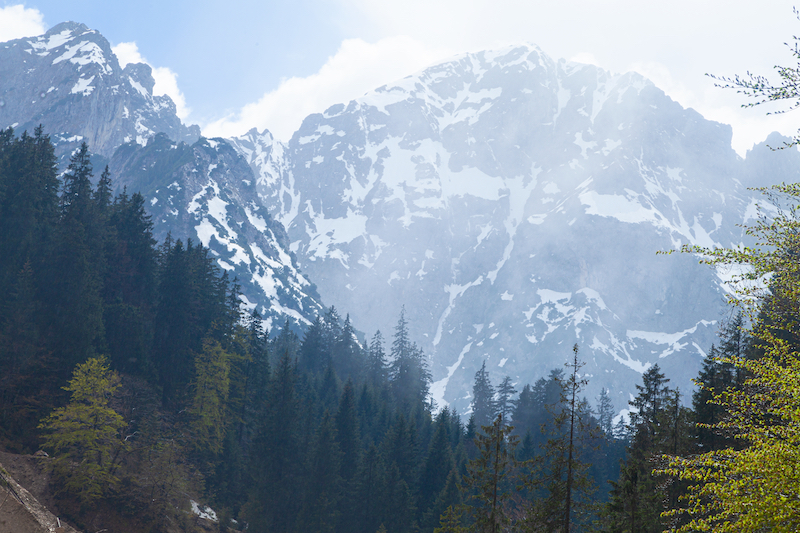
Es ergab sich auch noch die Möglichkeit,die Folgen der Erosion am Sababach anzusehen. Regen und harte Witterungsbedingungen führen hier zum Abbruch der Felskante.
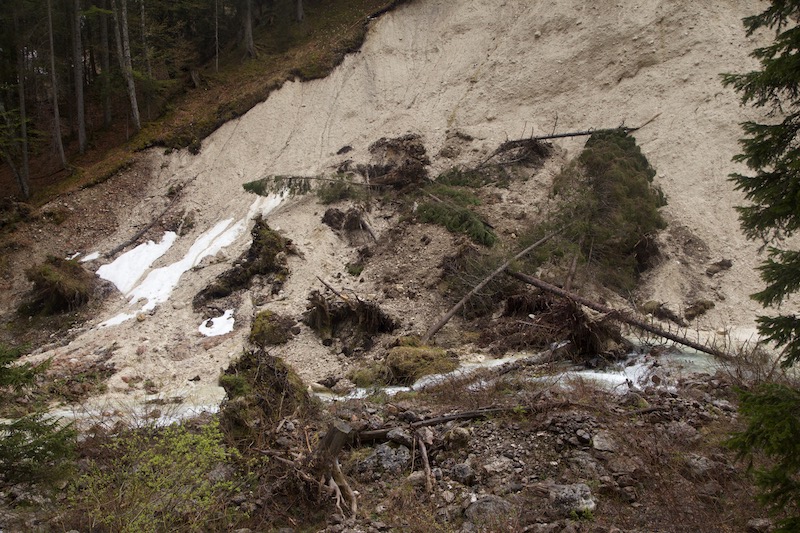
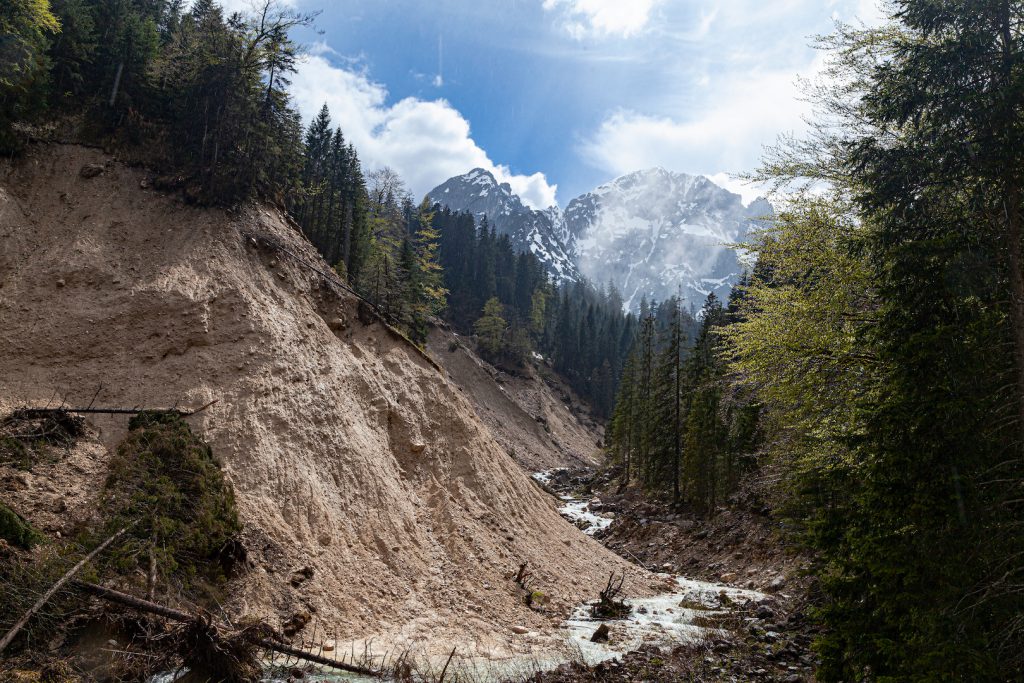
Später am Nachmittag war es bedeckt. Nach dem Regen stieg Nebel vom Wald aus auf. Es war eine komplett andere mystische Atmosphäre. Da zeigte sich wieder einmal, dass regnerisches Wetter oft am interessantesten für dramatische Bergbilder ist.
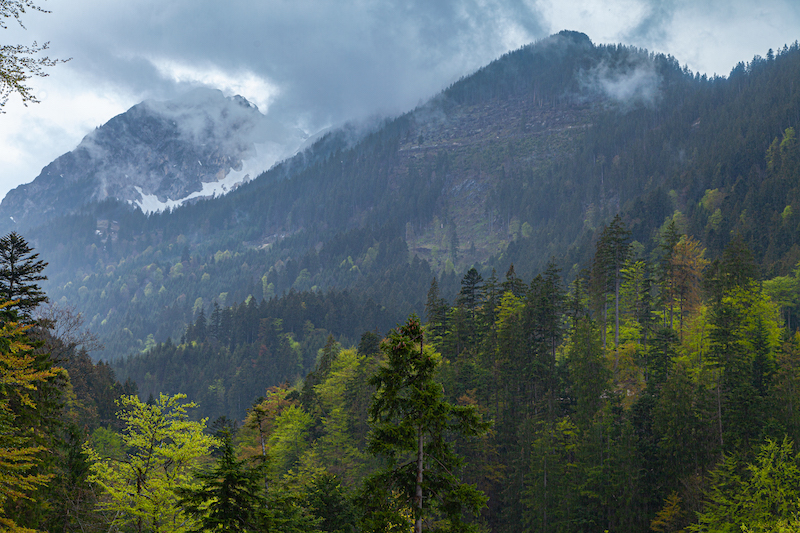
Das nasse Wetter lockte ein seltenes Tier hervor: den Alpensalamander.

Das spektakuläre Tal mit der Musauer Alm ist nicht weit von der bekannten Stadt Füssen mit dem berühmten Schloß Neuschwanstein entfernt. Auf der österreichischen Seite liegt Reutte und die Lechtalregion in der Nähe. Das Lechtal ist eine der letzten Wildflußlandschaften in Europa. Dort gibt es verschiedene Waldarten, eine große Artenvielfalt und weitere beeindruckende Bergszenerien.
An manchen Orten gab es am 19 Mai tatsächlich Unwetter. In Ostdeutschland führte Starkregen zu kurzzeitigen Überflutungen. Es war der Beginn einer längeren Regenperiode mit Hochwasser in Teilen Süddeutschlands. Das ist für Mai nicht ungewöhnlich. 1999 und 2005 gab es gewaltige und zerstörerische Hochwasser. Das Hochwasserereignis 1999 war Anlass für zahlreiche Schutzmaßnahmen, zum Beispiel in Garmisch-Partenkirchen in Oberbayern.